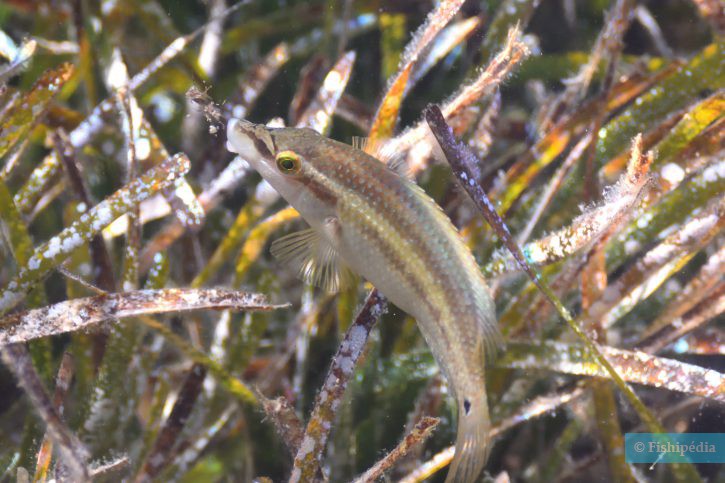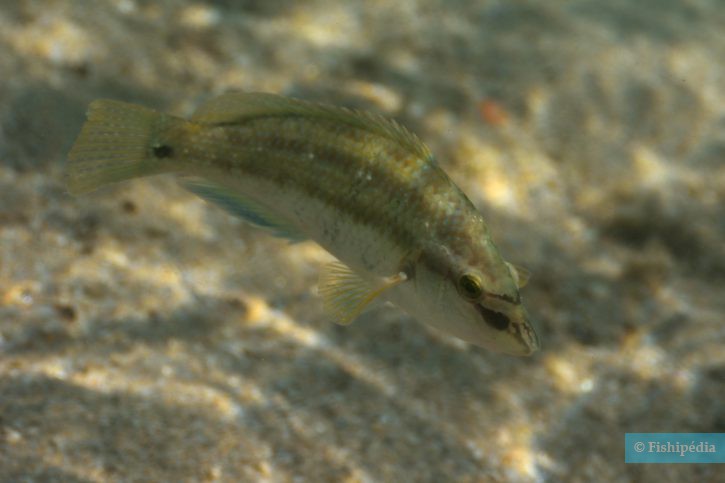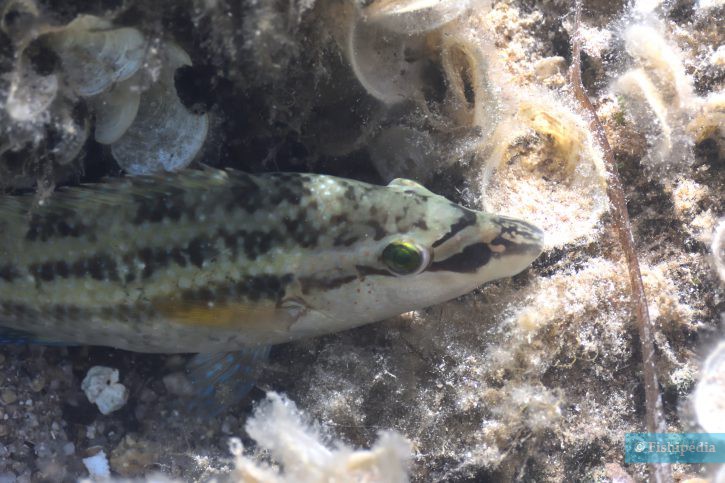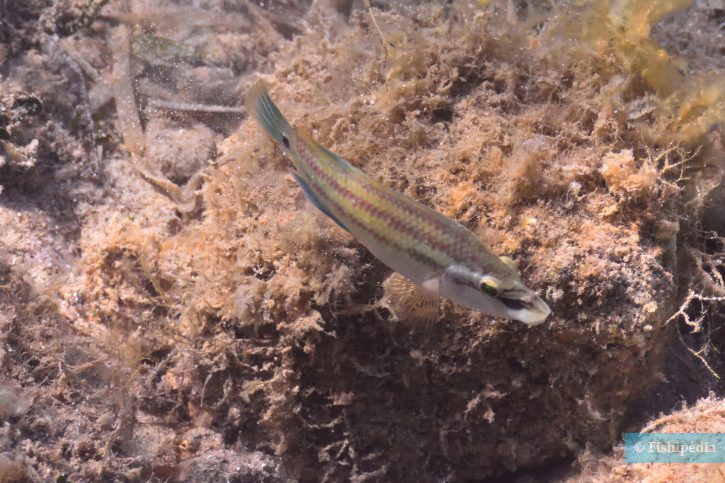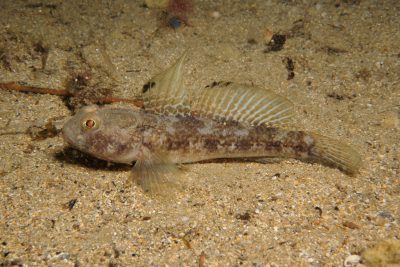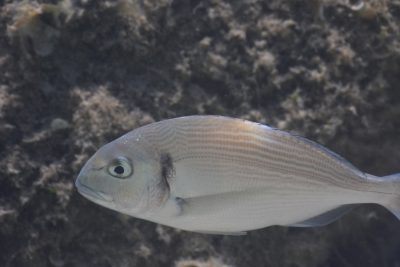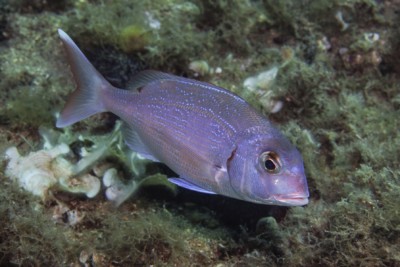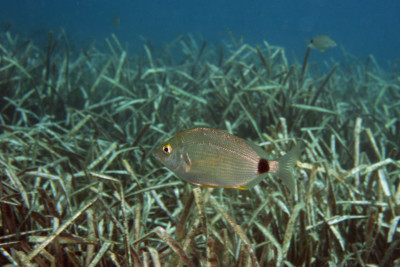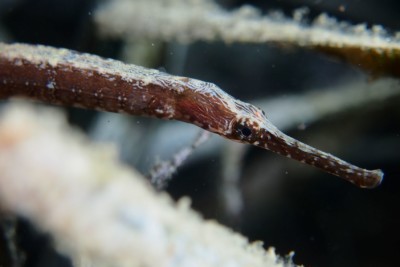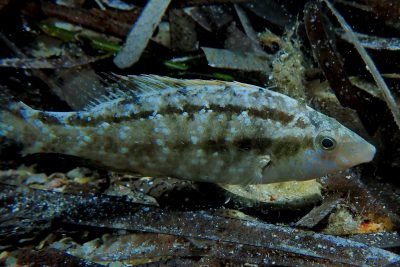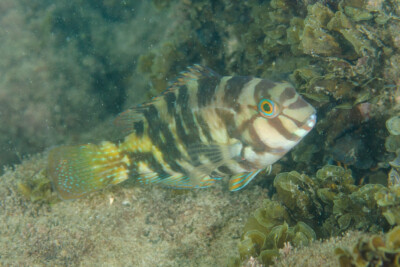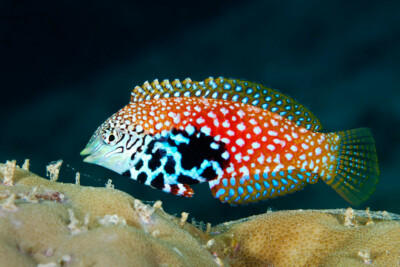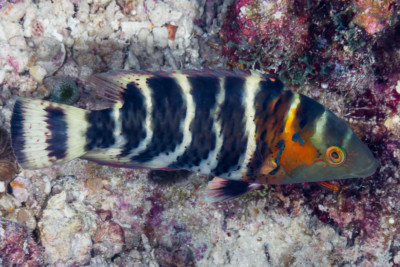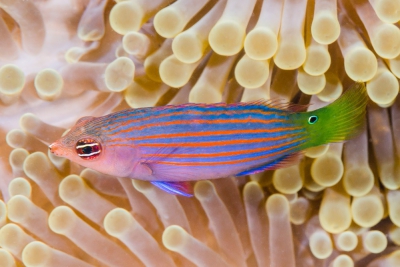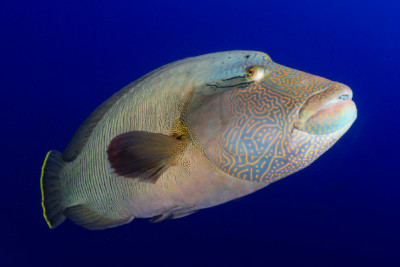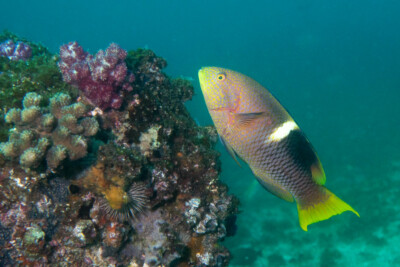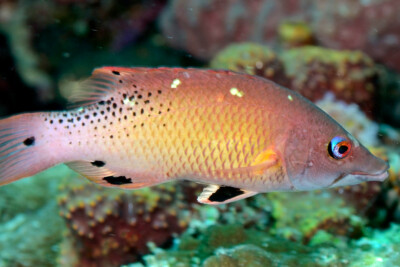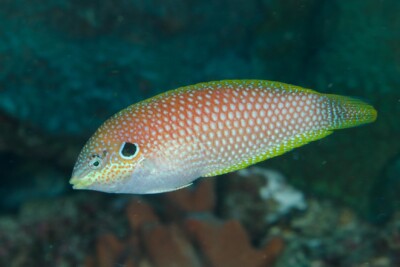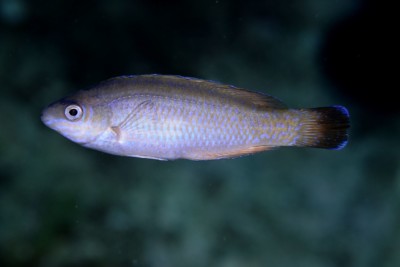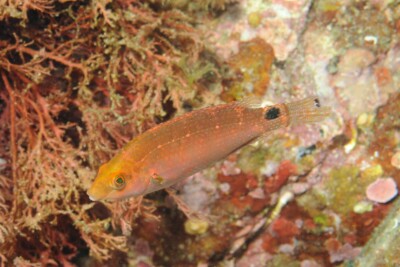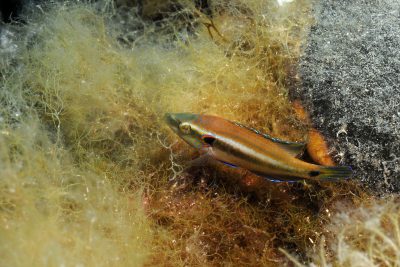east atlantic peacock wrasse
| Family | Labridae |
|---|---|
| Genus | Symphodus |
| IUCN category (World) | LC |
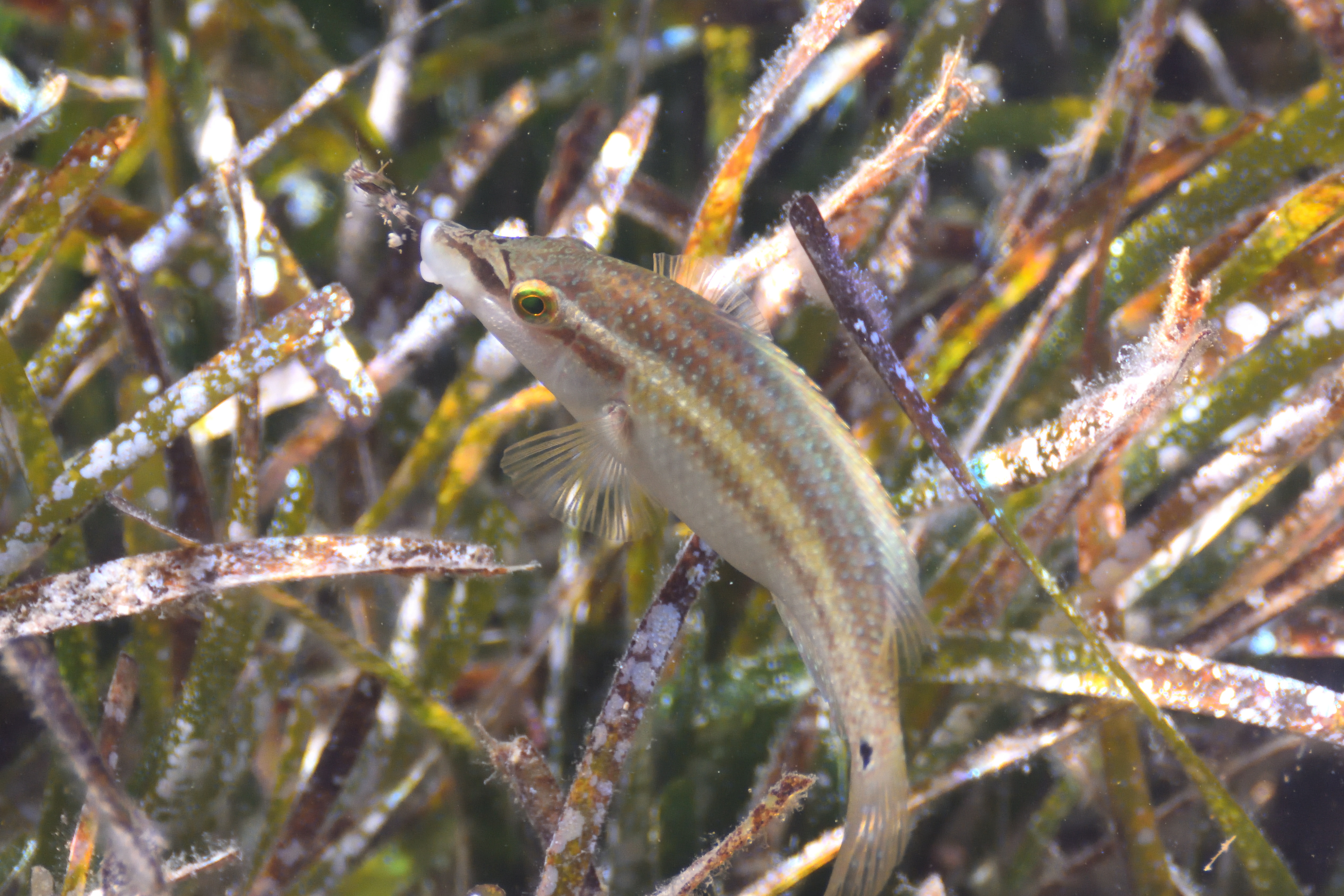

Introduction
The East Atlantic peacock wrasse, also known as the rocaou or rouquier, is one of the most common fish species along the Mediterranean coasts. This small predator frequents rocky areas and seagrass beds in search of small marine organisms.
Around Marseille, it is one of the species caught for bouillabaisse.
Who is it?
Morphology
-
Type
-
Average size25 cm
-
Maximum size40 cm
-
ShapeRectangular
-
Patternhorizontal stripes
-
Type
-
Average size25 cm
-
Maximum size40 cm
-
ShapeRectangular
-
Patternhorizontal stripes
How to recognize This fish ?
It is one of the largest wrasses along the Mediterranean coasts. The body is robust and elongated in shape. The sides are marked with three dark bands that may vary in visibility. The lips are protruding and fleshy.
The colors vary depending on the period and sex. However, both males and females are characterized by a sort of mask connecting the eyes. A dark spot is located near the pectoral fins.
Sexual dimorphism
During the breeding season, males are green to bluish in color and the bands turn red. Females and subordinate males are duller, with a generally beige body and slightly reddish stripes.
Behaviour & Life cycle
-
dietomnivorous with carnivorous tendency
-
Sociabilityliving as a couple or in a group
-
territorialYes
-
Way of livingdiurnal
Juveniles hide in seagrass beds or near algae in rocky areas. They live close to other peacock wrasses and salema porgies.
Adults, subordinate males, and females can be seen in small groups or solitary. Dominant males are often solitary and live deeper. These can reach up to 45 centimeters in length, making them among the largest wrasses in the Mediterranean waters.
Adults are sometimes seen in a vertical position, waiting to be cleaned by cleaner wrasses. They are regularly parasitized by isopod crustaceans or flatworms. (source: Doris)
Reproduction
-
Reproductionovipare qui pond sur substrat découvert
Between April and July, the male prepares a basic algae nest and waits for females by positioning himself just above it. Its colors become bright and turn fluorescent yellow/green.
When a female passes by, the male displays, guiding her towards the nest. Once the spawning is done, the male fertilizes the eggs and begins to protect the offspring. The female does not stay after spawning and does not care for the eggs.
Harmless species
This species does not pose a particular danger to humans in case of encounter in its natural habitat.
Origin and distribution
What is its habitat?
Natural environment characteristics
-
Temperature16 - 28 °C
-
Depth1 - 50 m
Biotope presentation
The East Atlantic peacock wrasse is commonly observed when snorkeling, at depths ranging from 2 to 5 meters. It can be found up to 25 meters deep. The species particularly favors coastal rocky areas and seagrass beds.
Species of the same biotope
Fishkeeping
Not recommended
We do not recommend keeping this species in an aquarium. It has unpredictable needs which, if not met, generate significant stress, potentially leading to a shorter life expectancy, an interruption of its growth or the development of pathogens.
To go further
Sources & Contributions
Participation & Validation
The Fishipedia team and specialist contributors are committed to providing high-quality content. However, although the information comes from scientific sources or testimonials from specialists, the cards may contain inaccuracies.

Adrien Falzon

Benoit Chartrer
Translation
Translation done with the valuable contribution of our translators, who make this information available to a wider audience. We sincerely thank them for their commitment.
Scientific partners
Tags
Species of the same family
Same genus
Species of the same biotope
